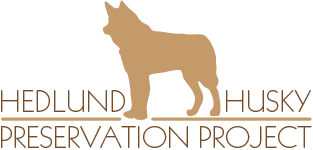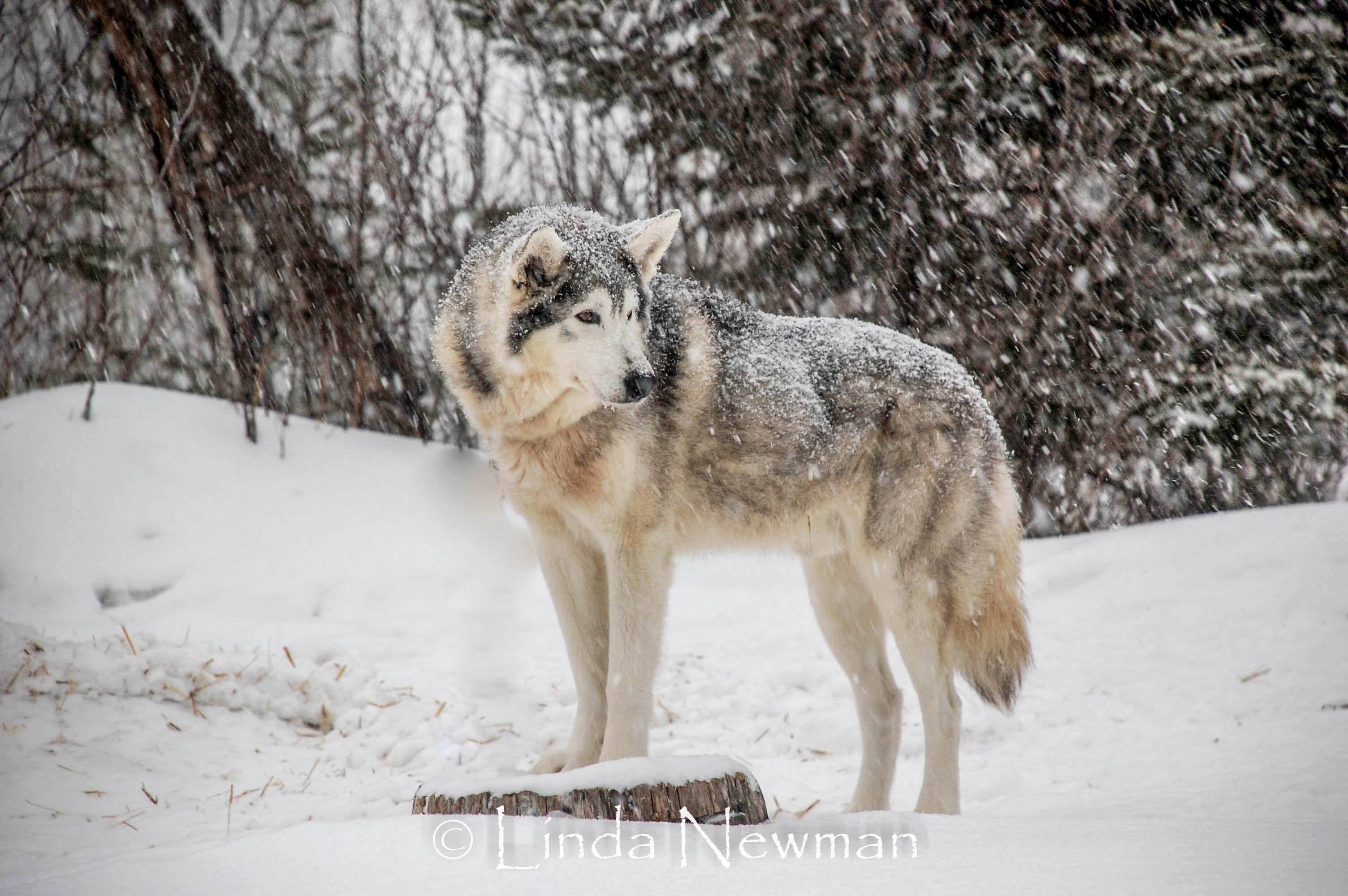Breeding Strategy for Hedlund Huskies (3)
The Breeding Strategy for Control Genetic Diseases in Hedlund Huskies:
- The Hedlund Husky is not a traditional pure breed of dog, but rather is a landrace breed. The Hedlund Husky Preservation Project does not have a "closed stud book." Our goal is not to preserve a bloodline while watching the population of dogs shrink to extinction - an inevitable result of continuous inbreeding or line breeding. Appropriate out-crossing is encouraged in order to expand the genetic diversity within our dogs. That noted, only healthy working dogs that are phenotypically and behaviorally consistent with the Hedlund Husky standard should be bred as part of the preservation program. To preserve the Hedlund Husky as a landrace, dogs selected for out-cross breedings should, if at all possible, literally be Hedlund Husky in all regards other than blood. Those out-cross candidates that do not meet the ideal standards shall be submitted to the Hedlund Husky Preservation Project Board for assessment and discussion prior to denial or approval. Once phenotypical suitability has been determined, genotype and risk of genetic disease should be assessed. Puppies from out-cross breedings should then be assessed for "type" prior to being adopted within the project.
- It is highly recommended that proposed breedings within the project be assessed for coefficient of inbreeding and kindred. Because there are gaps in the pedigrees of many Hedlund Huskies, this is most accurately done through DNA testing of both the proposed sire and dam. Both the sire and dam should also undergo genetic testing for the known genetic diseases for which testing is available.
- As has been our practice from the beginning, breeders in the Hedlund Husky Preservation Project must follow our puppies throughout their lives, seeking information from owners on at least an annual basis. Should a potentially genetic disease be diagnosed, the owners of that dog's parents and siblings must be notified and provided a copy of this breeding strategy document. In addition, project Registrar Teresa Cutler must be notified so this absolutely vital information can be included in the Project’s pedigree database.
-
Any Hedlund Husky affected by a heritable genetic disease must be removed from the Project's breeding pool. For mild disorders that can be surgically corrected or medically managed (i.e. dentition issues or hypothyroidism) this is most humanely accomplished by sterilizing the affected dog shortly after puberty or upon diagnosis of the genetic disease. Owners of dogs affected by debilitating genetic diseases should consult with their veterinarian to determine the most humane approach to treating and/or managing the disease, taking into consideration the quality of the dog's life.
- The presence of even a single puppy affected by an autosomal recessive or polygenic disease proves that both parents of that dog carry the gene or combination of genes that causes the disease. This information should be noted in both dog’s pedigrees and provided to owners of puppies and/or owners of potential future mates. It should also be provided to the Hedlund Husky Preservation Project Registrar who maintains the database of the genetic pedigrees of all Hedlund Huskies affiliated with the project.
- Known carriers should only be bred to dogs or bitches that are known to be clear as a result of genetic testing, or who are unlikely to also be carriers based on pedigree studies.
- If a dog is affected by an autosomal recessive genetic disease, each of the affected dogs siblings have a 50% chance of being carriers of the disease. Every sibling (littermate) of an affected dog should be considered a potential carrier until proved otherwise. Owners of those dogs should be notified, informed of the risk, and provided a copy of this breeding strategy. Potential carriers, especially littermates of an affected dog, should only be bred to dogs or bitches that unlikely to also be carriers based on pedigree studies or DNA testing.

